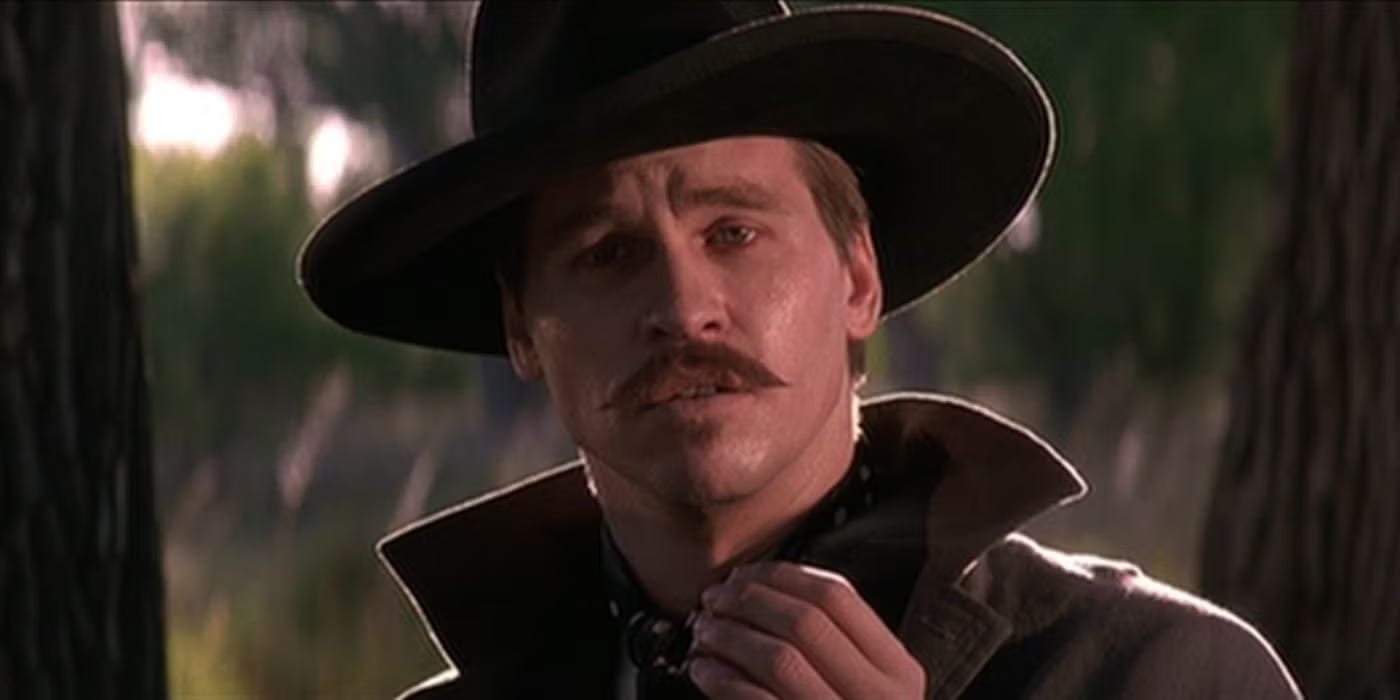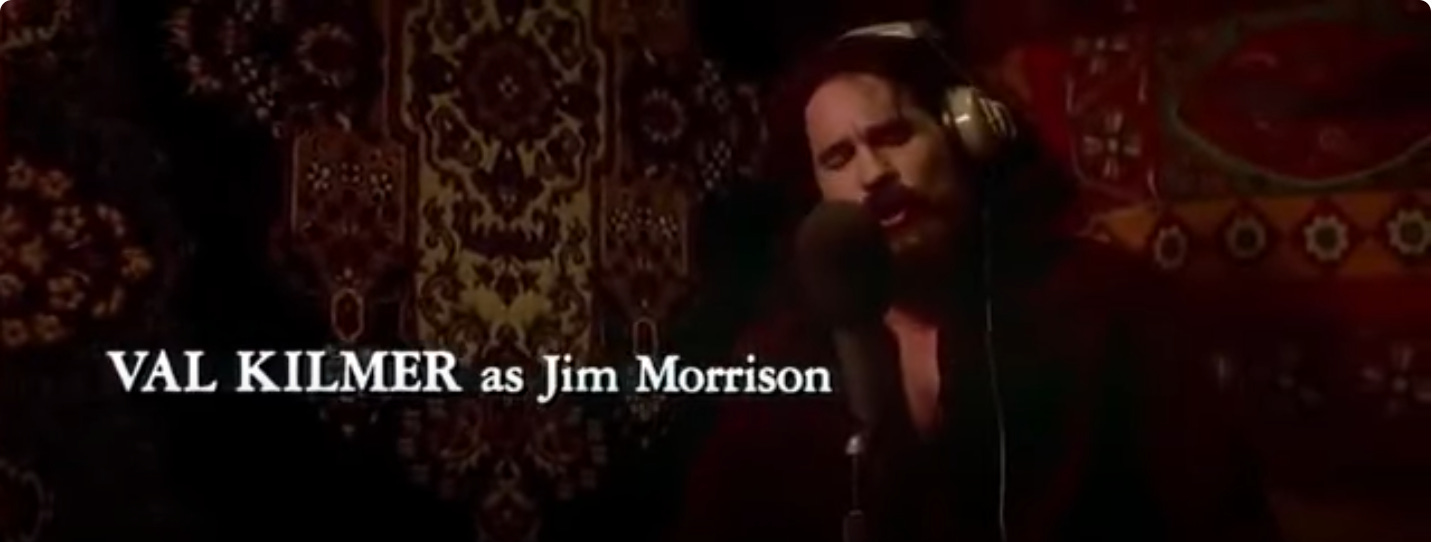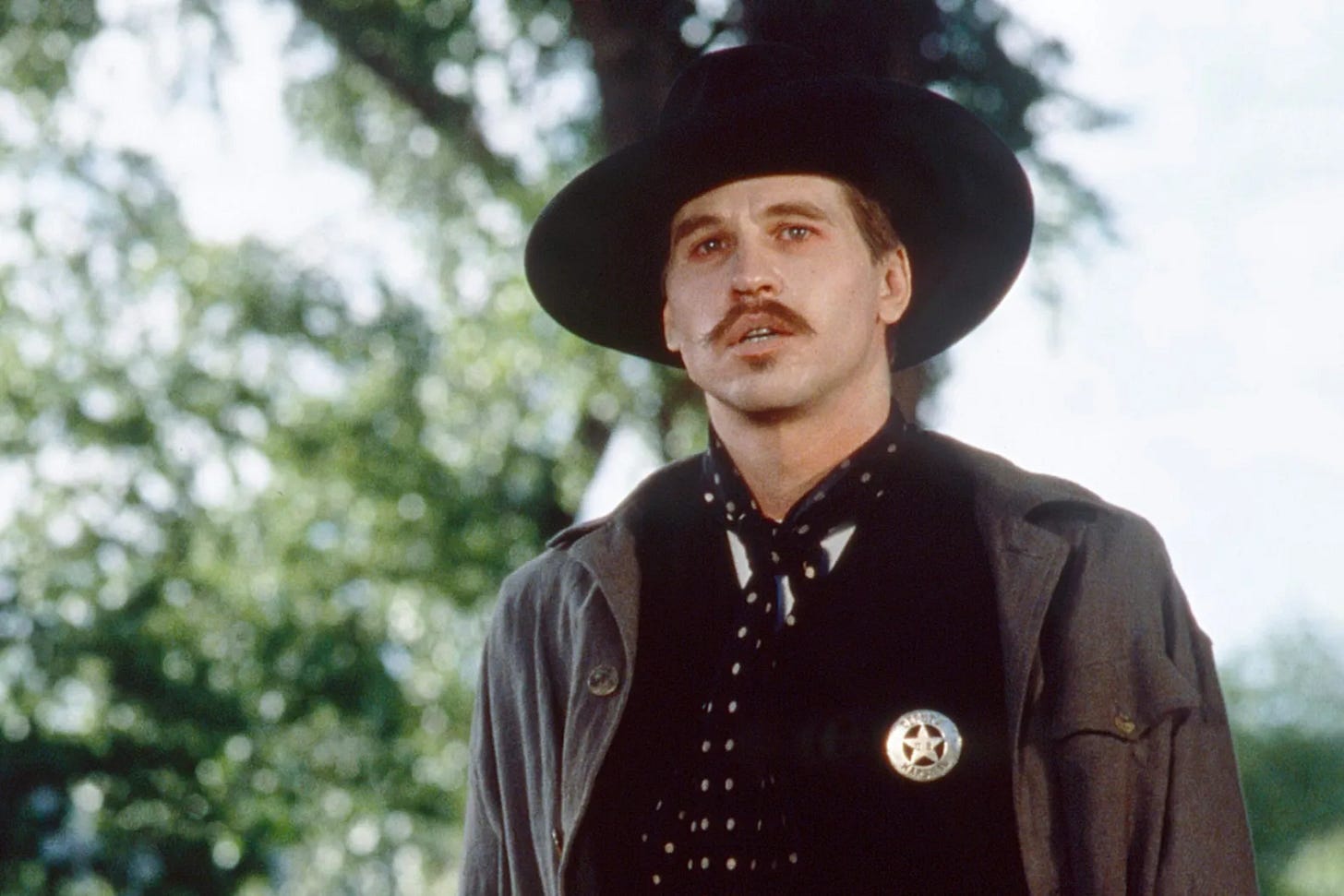Val Kilmer 1959 - 2025
The Iceman Cometh as the Dark Soul of the American Romantic Myth...
“Say when…”
Had Val Kilmer, who died from pneumonia April 1, 2025, not played a beautifully dissolute and doomed Doc Holliday in Tombstone (Buena Vista Pictures, 1993) he would still have had a notable career. Highlights of from the Juilliard alumnus’ filmography include:
Top Gun (Paramount Pictures, 1986), Lt. Tom "Iceman" Kazansky
Willow (MGM, 1988), Madmartigan
The Doors (Tri-Star Pictures, 1991), Jim Morrison
True Romance (Morgan Creek Productions, 1993), Elvis Presley
Batman Forever (PolyGram Pictures, 1995), Bruce Wayne/Batman
Heat (Regency Enterprises, 1995), Chris Shiherlis
The Saint (Rysher Entertainment, 1997), Simon Templar
Pollack (Zeke Films, 2000), Willem de Kooning
Wonderland (Flirt Pictures, 2003), John Holmes
Kiss Kiss Bang Bang (Warner Bros. Pictures, 2005), Perry Van Shrike
Bad Lieutenant: Port of Call New Orleans (First Look Studios, 2009)
Val (A24, 2021), Himself
Top Gun: Maverick (Paramount Pictures, 2022), Admiral Tom "Iceman" Kazansky
This is barely a third of Kilmer’s acting credits, but these were the movies mentioned in various obituaries published shortly after the actor’s death. People more often than not omit Kilmer's iconic rendering of the American mythic anti-hero. Yet, social media exploded with tributes and film clips incorporating Kilmer’s smart and laconic Holliday, always ready with dry wit and sharp observation. Top Gun, The Doors, Batman Forever, Heat, and Top Gun: Maverick were most mentioned in published remembrances.
To be sure, Kilmer’s Jim Morrison in The Doors was provocative, capturing the madness and genius of Morrison during the recording of L.A. Woman (Elektra, 1971) toward the end of the film:
People will most remember Kilmer for his portrayal of John Henry "Doc" Holliday, an American Werther. Peter Guralnick once said of the blues singer, Robert Johnson, “…Robert Johnson never died, he simply became an idea.” The same is true of Holliday and other romantic figures in American History. But they are ideas existing in the shaded part of the American Romantic Myth, authentic examples of the “beautiful and the damned” as stated by F. Scott Fitzgerald in his book of the same title.
While, at once, living, breathing people, figures like Johnson and Holliday owe as much to what the American imagination made of them as the existing historical record. Again, Guralnick, in speaking of Johnson, brings this point home:
“…for all of Robert Johnson’s heirs—legal, not musical or spiritual—the question of Johnson’s rediscovery seems not so much an artistic as a practical matter, perhaps a proud, perhaps a painful reminder of another time, another age, raising the only question that was voiced [by the Johnson son]: “Is there anything coming from my daddy’s records?” For them the real Robert Johnson exists lodged firmly in memory. For the rest of us he remains to be invented.”
That invention is what we have seen in the litany of Holliday depictions occurring in film from Harvey Clark in Law For Tombstone (Universal Pictures, 1937), to Victor Mature in John Ford’s My Darling Clementine (20th Century Fox, 1946), with Henry Fonda as Wyatt Earp, to Kirk Douglas in Gunfight at the O.K. Corral (Paramount Pictures, 1957) with Burt Lancaster as Wyatt Earp, to Kilmer’s presentation, and that of Dennis Quaid in Wyatt Earp (Warner Bros., 1994), Earp played by Kevin Costner, after.
Each of these movies represents a period’s vision of one of the most beautiful and conflicted American archetypes. The single most important thing that Kilmer brought to the role was a desperately needed, smartly expressed, wicked and dark sense of humor. In this, Kilmer took the role over the top and created an icon to which all others, good or bad, to be compared.
Viewing Doc Holliday as an idea represents his temporal visage as a complex archetype: the flawed yet charismatic anti-hero. Holliday, or rather, his portrayal, embodies duality—refined classical education and deadly skill, loyalty mitigated by self-destruction, and wit sharpened by the knowledge of his looming mortality. Historically, Holliday was a dentist-turned-gambler and gunfighter. As a cultural concept, he is a symbol of defiance against mortality, living fiercely despite life-threatening illness, and choosing honor over safety.
Rest easy, Mr. Kilmer…, you have your legacy, and it is a fine one.
Guralnick, Peter. Searching for Robert Johnson (New York: E.P. Dutton, 1989), page 68.





